A complete western Bhutan experience, this trip will take you right from Paro to Phobjikha valley. This tour is designed to give our guests an experience of our unique culture and traditions. One gets to experience great accommodation and foods at our partner hotels and resorts. This tour will give our guests also an experience to sleep overnight at a farm house in Punakha which will give an insight into the rural live of Bhutan, where subsistence farming is still practiced. The tranquility of the location of the farm house with the hospitality of the host will make our guest definitely miss the true essence of life. The simplicity to live in harmony with mother nature.
The highlight of this tour apart from the TIGER NEST HIKE in Paro is the visit to the BIGGEST BUDDHA STATUE in the capital city Thimphu is the visit to the PUNAKHA DZONG which is majestically located at the confluence of two rivers and the BIGGEST PROCTED Marshland at Phobjikha at 2900 meters above sea level and BUMDRA CAMPING at 3800 m / 12464 fts above the sea level.
Welcome to the land of the thunder Dragon. We invite you to experience the beauty, culture and spirituality of Bhutan with us. We wish you a beautiful journey thru our kingdom.
Day 1: Arrive at Paro International Airport – Transfer to Thimphu.
Distance: 54 km
Driving time: 1hr 20mins drive.
Altitude in Thimphu: 2400 m / 7874 ft above sea level.
Our pilgrimage begins with a journey towards east into the booming metropolis of Thimphu. Situated at an altitude of 2400 m it is home to 140,000 Bhutanese. Thimphu being the capital of Bhutan, offers unique opportunities to explore the Bhutanese culture, lifestyle and traditions in depth.
We invite you to see the sights of the Kingdom’s capital with us. Below we have listed some of the experiences that we enjoy the most!
Roughly 30-minute drive from the airport towards Thimphu we will stop to have a view of Tachogang Monastery. The temple of excellent horse built by Thangthong Gyalpo (Iron chain builder in Bhutan) in 15th century. Down by the river we can see one of his Iron Bridge. You can take a walk and cross the suspension bridge built just next to the Iron bridge to have a closer look.
Once we arrive Thimphu, we will spend our time circumambulating the sacred National Memorial Chorten. This is a Tibetan-style chorten built in 1974 in memory of the late King Jigme Dorji Wangchuk who passed away in 1972. It is one of the most visible religious structures in town and for many people it is the focus of daily worship. Remember to walk around the Chorten at least once to gain merit and good luck.
Next, we will drive up a ridge to visit the Biggest Buddha Statue at Kunesel Phodrang in Thimphu. This statue of Buddha measures 52 meters. It is one of the largest statues in the world. The statue is made of bronze and is gilded in gold. There are many smaller Buddha statues placed inside.
Next, we will take in more of kingdom’s rich culture at the Folk Heritage Museum. The museum is a restored three story traditional rammed mud and timber house inaugurated as a museum by Her Majesty the Queen Ashi Dorji Wangmo Wangchuk in 2001. It showcases the traditional artifacts used now and, in the past, which helps connect people to the Bhutanese rural life.
Typical Bhutanese Lunch at the Museum restaurant.
We will drive to the National Post Office for stamps. Bhutan is famous for producing unique and innovative stamps. After selling peculiar ‘CD-stamps’ Bhutan’s Post office now offers personalized stamps; we invite you to surprise your family and friends with your custom-made stamp made with one of your favorite holiday photographs!
We will also browse the striking collection of intricate textiles at the National Textile museum.
The Museum introduces you to the living national art of weaving. The exhibition displays the major weaving techniques and styles of local dress and textile made by the Bhutanese women and men.
In the evening you can stroll in the town, visit the Local Craft market just above the Textile museum and visit local handicraft shops.
Overnight in Thimphu.
Day 2: Thimphu.
Tango monastery and Tango Dzongkha monastery:
Time:5 – 6 hours.
Difficulty level – Strenuous (If only hiking to Tango Monastery – Moderate).
Tango is a beautiful temple which is relatively easy to reach. The hike all the way up to Tango Dzongkha, a meditation retreat for hermits, is more challenging but will reward you with great views across Thimphu and Punakha valleys on clear days. Abundant flowering rhododendrons higher on the ridge make this hike even more inspiring in the spring.
Choose between two routes climbing uphill to Tango. After visiting the monastery, you will follow the upper trail just above the huge prayer flag in front of the temple entrance. The trail passes a few houses occupied by monks before crossing above a small land slide and continuing steeply up a log skid trail in the left side-valley. After leaving the blue-pine behind, the vegetation is dominated by spruce and hemlock, prickly barberry bushes and Daphne plants.
When reaching a meadow, you have completed the steepest part, and can proceed through mixed juniper, cypress and spruce forest. There are a number of hidden meditation huts along this route, so remember to be quiet. A small path past a chorten and through prayer flags will lead you to the Dzongkha itself. Although there is no admission (due to the fact that Tango Dzongkha is a meditation temple occupied by hermits), the view from the temple; of Cheri Monastery, Drolay Goemba, Thimphu and beyond, are excellent. The chorten below the temple is a breathtaking picnic spot.
Tango Monastery is a 15th century temple unique in its architecture. When the monastery was presented to Zhabdrung Ngawang Namgyal in 1617, a battle was going on between the Tibetans and Bhutanese. The Zhabdrung therefore meditated in a cave at Tango as a result of which the invading forces were defeated. Today you will see a large stone in the shape of a horse head by the cave which is supposed to frighten the enemies of Buddhism.
Overnight in Thimphu.
Day 3: Transfer to Phobjikha valley.
Distance: 134 km
Driving time: 5 hrs 30 mins drive.
Altitude in Phobjikha: 2900 m / 9514 ft above sea level.
Phobjikha Valley is one of the most stunning areas in the country. The wide flat valley without any trees after the hard climb through dense forest is an extremely rare experience in Bhutan. In contrast to some parts of Bhutan, where modern development is already very apparent, Phobjikha is a place with natural beauty.
Before driving through the fir, juniper and rhododendron into the glacier valley of Phobjikha, we will briefly visit Semtokha Dzong. The oldest dzong in the country (built in 1629) stands on a soaring ridge 5 km away from Thimphu. Its strategic position is evident as it controls all the approaches to and from Thimphu. Notice the contrast of traditional and modern as you enter the dzong grounds; the white painted dzong with the growing city in the background and the newly constructed 52 m tall Buddha statue perched on the hill right behind.
After the visit we will continue our journey and roughly 50 mins drive we will stop to stretch by hiking to Hongtso Goemba (1 hrs hike). The Goemba was built in 1525 by the older brother of Drukpa Kuenlay, the Divine mad man. It is a two-story traditional Bhutanese building where the main alter room has an enormous statue of Guru Tshoki Dorji in a standing posture together with his spiritual consort. Inside we can view very old wall paintings.
10 mins drive after the end of hike we will reach Dochula Pass (3000 meters). If weather permits, we will have great view of the extended eastern Himalayas in Bhutan.
We will stop at the cafeteria for hot lunch with far away mountain views. At the pass we will visit Druk Wangyel Monastery located just few meters above the cafeteria.
From there we will continue our journey by winding our way into Wangdi valley (1300 meters) and then drive up until the neck of Pelela pass (3300 meters) where we will cut our way to take a diversion into the glacier valley filled with dwarf bamboos. The valley is one of the most important wildlife preserve in the country, because of the large flock of black necked cranes that migrates from Tibet in the winter.
In the valley we will visit the famous 16th century Gangtey Goemba that overlooks the large green expanse of the valley. The monastery is surrounded by a large village inhabited mainly be the families of the Gomchens (lay monk) who take care of the monastery.
Next, we will visit the Crane education center. There we can watch the short documentary on the magnificent black necked crane and also look out for the cranes in the valley with the help of a binocular there.
Overnight in Phobjikha valley.
Day 4: Phobjikha valley.
Tiger Trail from Gangtey to Rukubji:
Time: 2 hours walk to Drang Lha village, 4 – 5 hours hike through the forest to Rukobji. Total 6 – 7 hours.
Difficulty level – Strenuous.
If you are in good shape and up for an adventurous hike through tiger territory, you might find the hike from Gangtey to Rukubji Village an exciting one-day endeavor. You can start the hike at the beginning of the Nature Trail. Rather than following the path leading down into the valley after Semchubara village, you will continue up to the top of the left side valley. Your local guide will join you from Drang Lha village. As you walk past the old clustered village houses on your way up you will have beautiful views of Phobjikha and get an insight into village life in this rural and remote area. As you move into the forest, you will continue to climb slowly upwards into increasingly denser vegetation. Be prepared to face many obstacles such as thick bush growth and timber logs which you will have to crawl under or climb over. In some areas there is no distinct path. Rain is also very common as you get to the top of the pass. After crossing the pass, you slowly descend down through the forest until reaching Rukubji.
In the midst of the area you will be walking through, a heat-sensor camera put in place by the Forestry Park Rangers has recently captured pictures of different wild cat species. The yearly loss of cattle also documents the presence of tiger in the same area.
Overnight at Phobjikha valley.
Day 5: Transfer to Punakha.
Distance: 87 km
Driving time: 3 hrs drive.
Altitude in Punakha: 1300 m / 4264 ft above sea level.
The sub-tropical valleys of Punakha and the surrounding mountain sides offer a large variety of attractive places to explore and discover monasteries and the most impressive Dzong in the country.
After two hours of descend we will arrive Wangdiphodrang valley. There we will visit the Wangdiphodrang Dzong which was burnt down by fire in 2012. The original Dzong was built in the 17th century by Zhabdrung (the one who unified Bhutan).
We will hike to the famous Chimi Lhakhang (Fertility temple). 1 hr hike. The 30-minute walk from the road to the lhakhang is through open farmland and rice paddies. It is believed that a demoness who had been terrorizing the valley transformed herself into a black dog to escape the wrath of Drukpa Kuenlay, the Divine Madman. However, he caught the dog and buried it under a pile of earth shaped like a woman’s breast. He then built a chorten on top of this mount and prophesied that a temple would one day be consecrated over it. True to the prophecy, his brother, Lam Ngawang Chogyal, built Chime Lhakhang in 1456. If you are wishing for a child, it is believed by the Bhutanese that a visit to the Divine Madman’s temple, Chime Lhakhang, might help increase your chances! Thousands of people visit this temple on pilgrimage and numerous couples visit the lhakhang to pray to become pregnant and receive a wang (blessing) from the saint with the magic thunderbolt of wisdom. Many parents also bring their newborn children to receive the baby’s name from the local lama.
After Picnic lunch by the riverside we will drive down valley to visit the stunning Punakha Dzong. The Dzong is considered one of the most important and also one of the most beautiful Dzongs in the Kingdom. It was built by Zhabdrung in 1637, and was the seat of the government every winter until Thimphu was established as the permanent capital in 1955. It is still the winter residence of the Central Monastic Body.
Next, we will travel up the valley north and cross the Mo Chhu to hike up and pay respect to the grand Khamsum Yuelley Namgyal Chorten, The Chorten is 30 meters (100 feet) tall and can be seen in the distance when driving or walking up from the footbridge towards the lodge. The three-leveled chorten took eight and a half years to build and was consecrated in 1999. Dedicated to the Fifth King, it was built to remove negative forces and to provide peace, stability, and harmony in an ever- changing world. It is therefore filled with every form of colorful protector imaginable.
Overnight in Punakha.
Day 6: Punakha.
Goen Tshey Phu Nyea Hike:
Time: Total 5 – 6 hours hike.
Difficulty level – Strenuous.
This is a wonderful yet strenuous hike through beautiful nature in National Park territory. Combined with a temple visit in an area full of fascinating allegedly imprints and formations by Guru Rinpoche, the hike to Goen Tshey Phu Nyea can prove to be very interesting. The trail gives no mercy and starts off by climbing constantly up the two to three hours it takes to reach the temple. Despite the steep climb, the path is very enjoyable through mystifying forests, past small villages, and with great views and with sights of wild life if you are lucky. The last section of the hike takes you across a meadow with the view of the Goen Tshey Phu Nyea Temple glued to the huge rock formation behind it. After having a look inside, take a walk around to see the two impressive cave formations and Guru Rinpoche’s “kitchen”. You may enjoy your picnic lunch in the peaceful temple entrance room with tranquil views of the outside. On your way down, you may follow a substantially longer path than the one you walked up which is not as steep and therefore is much gentler on the knees.
During the eight century, Guru Rinpoche came to Goen Tshey Phu Nyea from Nepal with his three heartiest disciples Pema Lingpa, Karma Lingpa and Dorji Lingpa. He discovered the cave to the upper left side of the temple and meditated here for two and a half months. At the end of this period, hundred thousand angels appeared from the cave. Today, you will find a holy water source about ten meters into the grotto formation. After completing his meditation, Guru Rinpoche stepped on the large rock in front of the temple, and flew off to Tsheychu Dra, a temple in Gasa. His three-foot prints can still be seen clearly. Around the temple grounds you can also walk into a second cave, offering you the opportunity to clear your sins if you are brave enough to crawl around the rock formation inside the dark hole. In renowned Tarzan-style, you may also climb up a 90-degree hillside above the temple, pulling yourself up on the stretchy branches leading up to the stone formation said to be Guru Rinpoche’s kitchen.
Overnight in Punakha.
Day 7: Transfer to Paro
Distance: 125 km
Driving time: 4 hrs drive.
Altitude in Paro: 2400 m / 7872 fts above sea level.
The journey west takes us back to Paro valley crossing the Dochula Mountain Pass, side stepping Thimphu city and following wang Chhu river and and Pa Chhu rivers before arriving in Paro.
At Dochula pass we will take the hike.
Dochula – Lungchutse – Tashigang Goemba Hike.
Time: 4-5 hours
Difficulty level – Moderate.
One of the most rejuvenating and picturesque hikes during your kora journey is the Dochula to Lungchutse and Trashigang Goemba, not only the hike itself is beautiful, but the 360° view from Lungchutse temple is one of the best you will get of the Himalayan mountain range.
You will start your hike from the large chorten in the middle of Dochula, the pass between Thimphu and Punakha at 10,300 ft / 3,140 m above sea level. From here the trail slowly climbs a ridge through a forest of hemlock, birch and rhododendrons until reaching an open meadow. Again, you will enter into forest of moss-covered rhododendrons, gigantic hemlocks, junipers, and bamboo undergrowth. A small trail leads you the last 160 ft / 50 meters past a row of fluttering prayer flags up to Lungchutse temple.
On clear days, the view from the temple is fantastic! You will have a 360° view of the Himalayas including views of Jumolhari (24,000 ft / 7,314 m), Masang Gang in the region of Laya (23,500 ft / 7,158 m), Zongophu Gang – a Table Mountain that dominates the isolated region of Lunana (23,160 ft / 7,060 m) and Gangkhar Puensum, the highest peak in Bhutan and the highest unclimbed peak in the world (24,600 ft / 7,497 m). You can also see Gasa Dzong, as a tiny white speck in a sea of green almost 31 miles / 50 kilometres to the north.
A trail to the left just 490 ft / 150 m below Lungchutse, leads to Trashigang village and temple. It slowly descends through spruce, rhododendron, hemlock and juniper forest. The village’s many dogs will warn the villagers about your arrival as you walk through the settlement down to the temple. It is nice to have lunch around the chorten in the temple’s courtyard while watching the monks in their daily endeavors.
The trail leading down from the front of the temple zigzags quite steeply down the side of the mountain until reaching a farm road which takes you up to the main road. Unless you have had enough hiking for one day, you might also want to visit Hongtsho village temple on the hill side to the right on the opposite side of the road. This involves a 30 – 60-minute short hike up through the little village and back down again the same way.
Trashigang Goemba was built in 1786 by the 12th Je Khenpo. It is an important mediation centre, and houses statues of several Je Khenpos who meditated here.
After the hike we will continue our journey to Paro.
Overnight in Paro.
Day 8: Bumdra camp.
Sangchoekor monastery – Bumdra monastery.
Distance: 7 km
Camp Altitude: 3800 m / 12464 fts above sea level.
Difficulty level – Moderate.
This trek is 4 hrs climb from the road end. On route to Bumdrak camp site we will trek past a handful of temples and hermitages. Bumdra monastery and the camp site is located in the mountainside 3800 meters above sea level overlooking the Paro Valley. Bumdra Monastery is another 8th century temple blessed by Guru Rinpoche. Behind the altar, you can see what is believed to be the footprints of a thousand angles. Many monks come to this peaceful place to engage in meditation.
After breakfast, we will drive roughly 50 mins to Sangchokhor Buddhist College on the top of the hill north-west of Paro town. This beautifully situated temple is a teaching institution for 105 monks aged 15 – 30. Sangchokhor was originally built in the 18th century, but was rebuilt 30 years ago after a horrible fire. The institution now receives full government support as well as support from the Late Father of their Majesties, the four Queens of Bhutan.
Bumdra Monastery is another 8th century temple blessed by Guru Rinpoche. Behind the altar, you can see what is believed to be the footprints of a thousand angles. Many monks come to this peaceful place to engage in meditation. Reaching this point will give you a huge sense of achievement
Overnight at Bumdrak camp site, Paro.
Day 9: Paro.
Today morning we will explore near by the camp site before descending our way back to the valley floor from our camp site.
On the way, we will stop to visit the most famous Taktsang Goempa (Tiger’s nest monastery). Tiger’s Nest or Taktshang Goempa is one of Bhutan’s most revered monuments. It literally hangs off the face of a cliff 900 meter above the valley floor. The legend states that Guru Rinpoche flew into Bhutan on a mythical tigress and meditated in a cave where Taktsang stands today. The Taktshang Goempa is built around the cave. The hike offers spectacular views of the Goempa and the valley below. Horses or mules can be arranged on request to help lighten the journey.
Lunch at Farm House followed by Traditional Hot stone Bath which will help easy your muscle pain from the climb.
Next, visit the auspicious kyichu Monastery. The seventh century monastery is one of the oldest and most sacred temples in the Kingdom. The Tibetan King, Songsten Gampo ordered the establishment of monasteries in the Himalayan region to subdue evil spirits and to spread Buddhism. Of the 108 monasteries two were built in Bhutan namely the Kyichu Lhakhang and the Jampa Lhakhang in Bumthang.
Continue walking to the Paro Town. It is a must to take a stroll in the town for all visitors who come to this valley. The town dates back from 1985 and its lined up by souvenir shops and café. If you are in for a good cup of café, stop at Mountain Café Roastery. They serve the best coffee in Bhutan.
The hike to the famous Taktsang Goemba and the visit to the oldest temple of Bhutan is a great finish to this day of cultural immersion and your journey to this ancient kingdom of BHUTAN.
Overnight in Paro.
Day 10: International Departure.

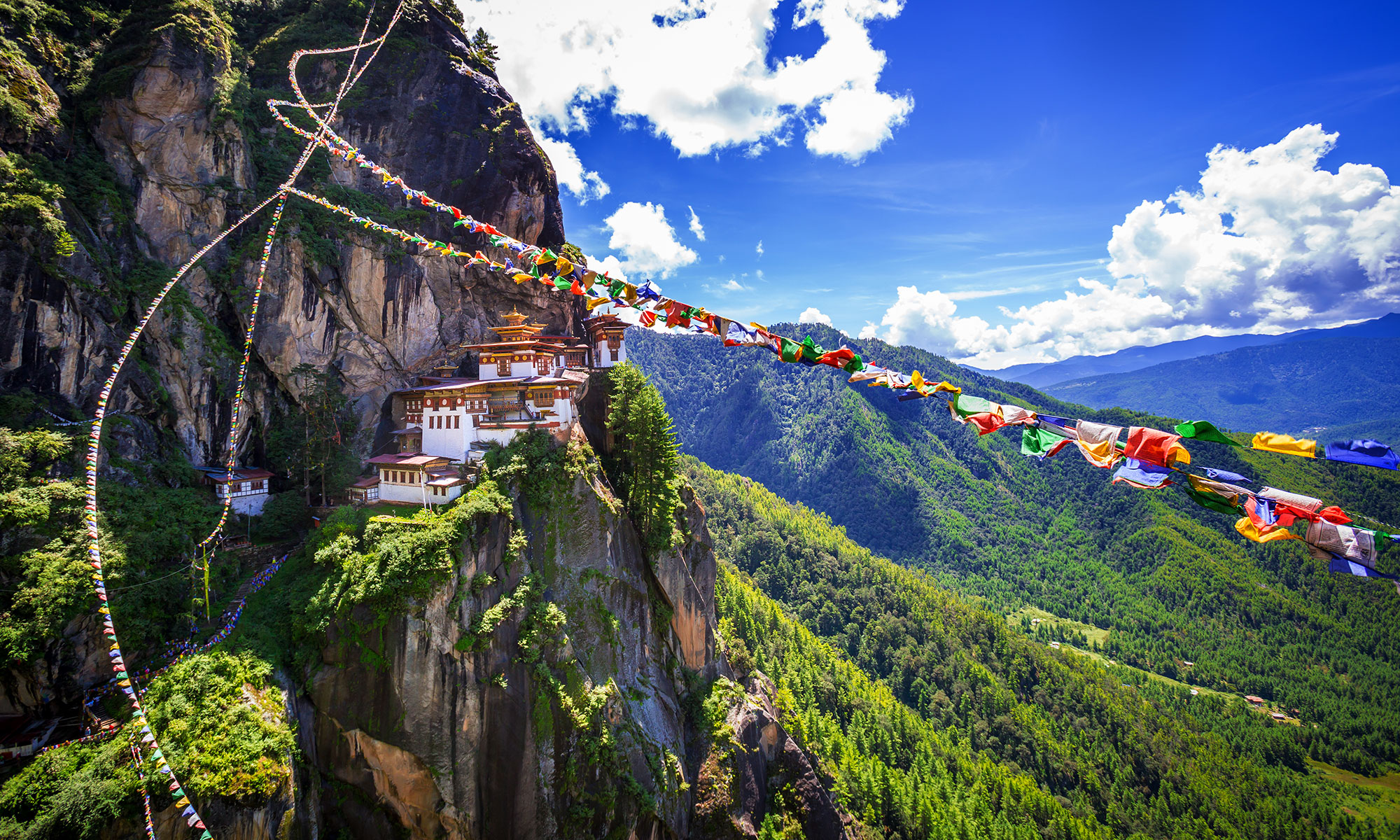
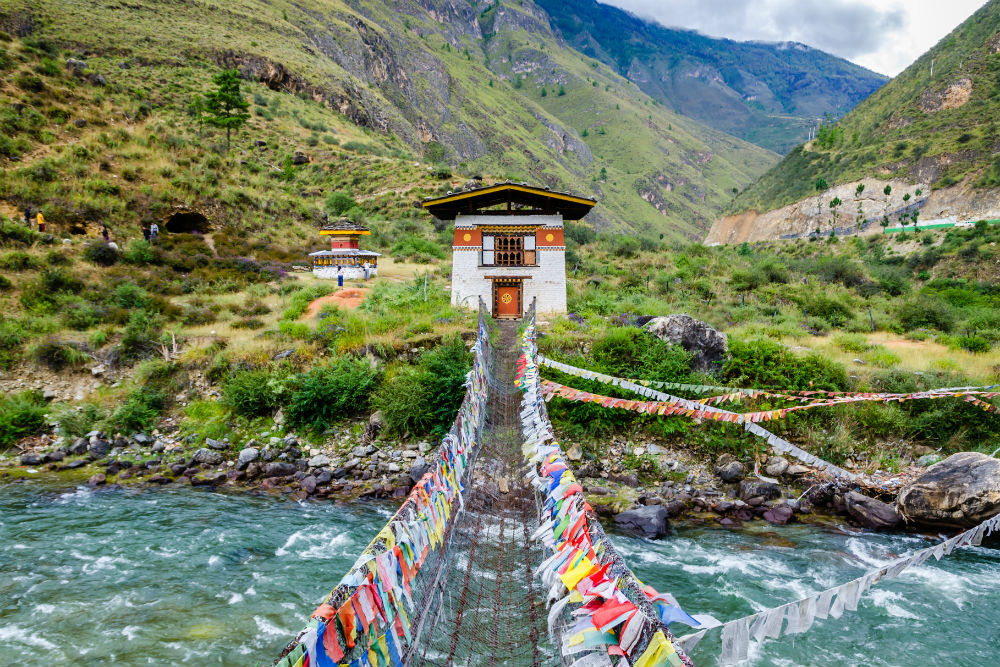
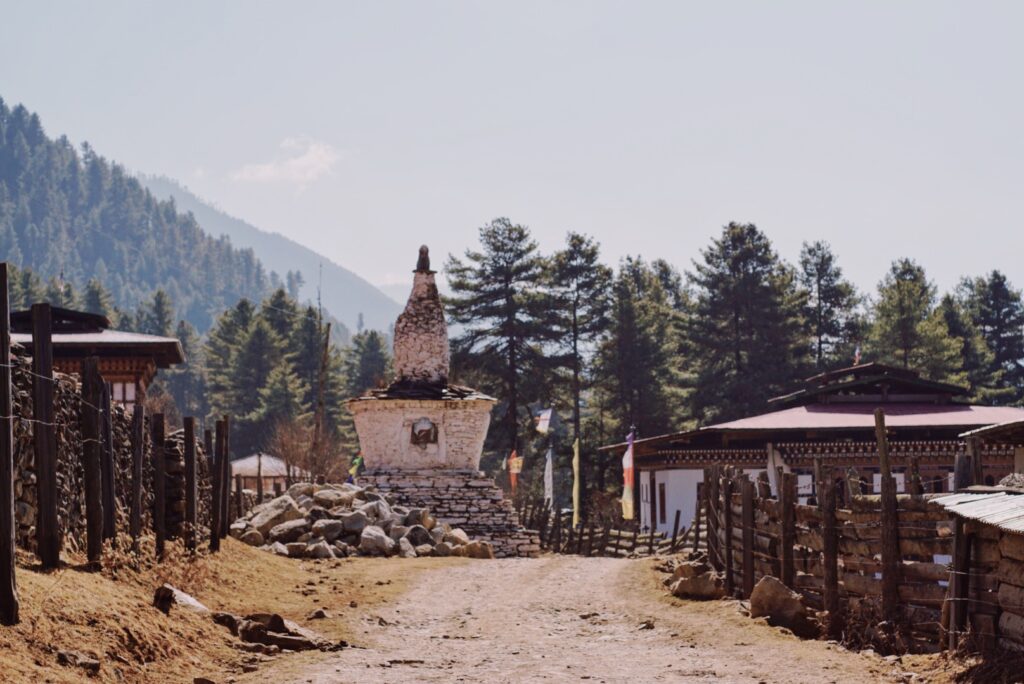
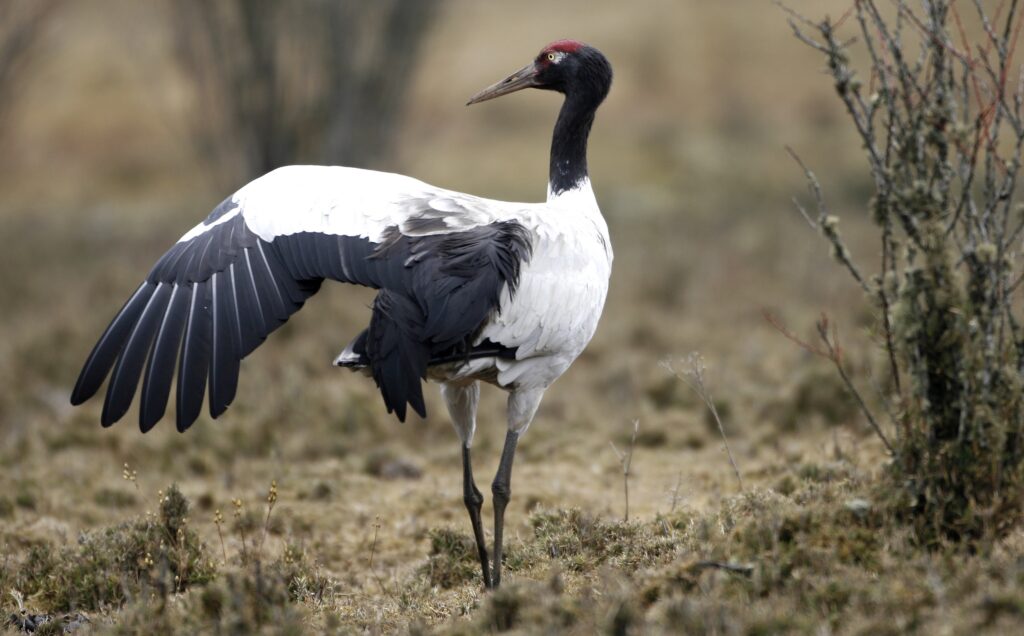
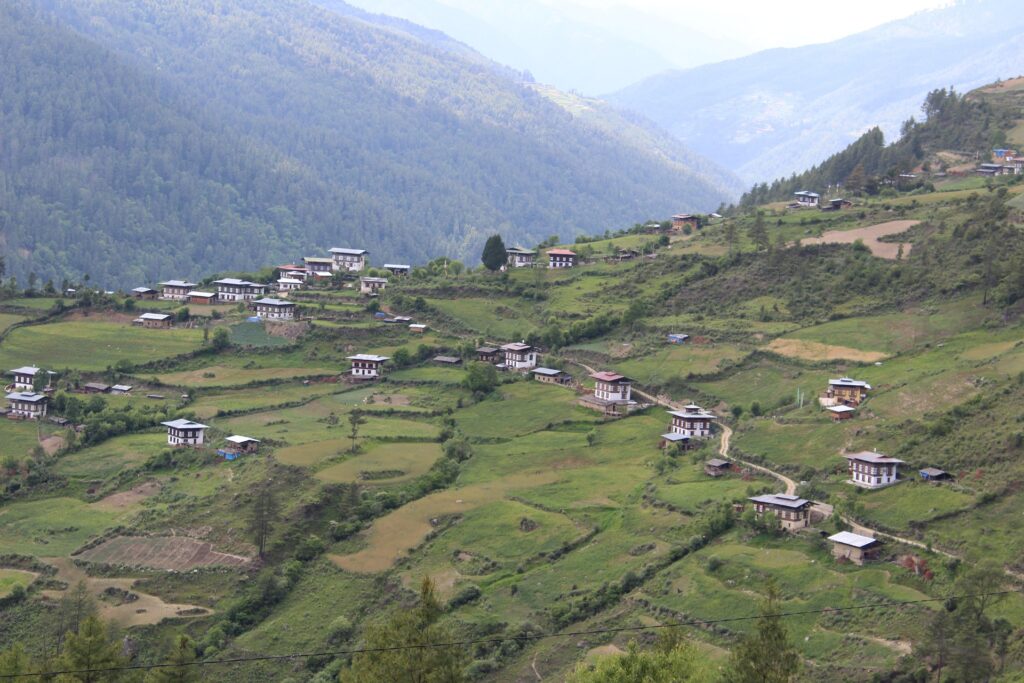
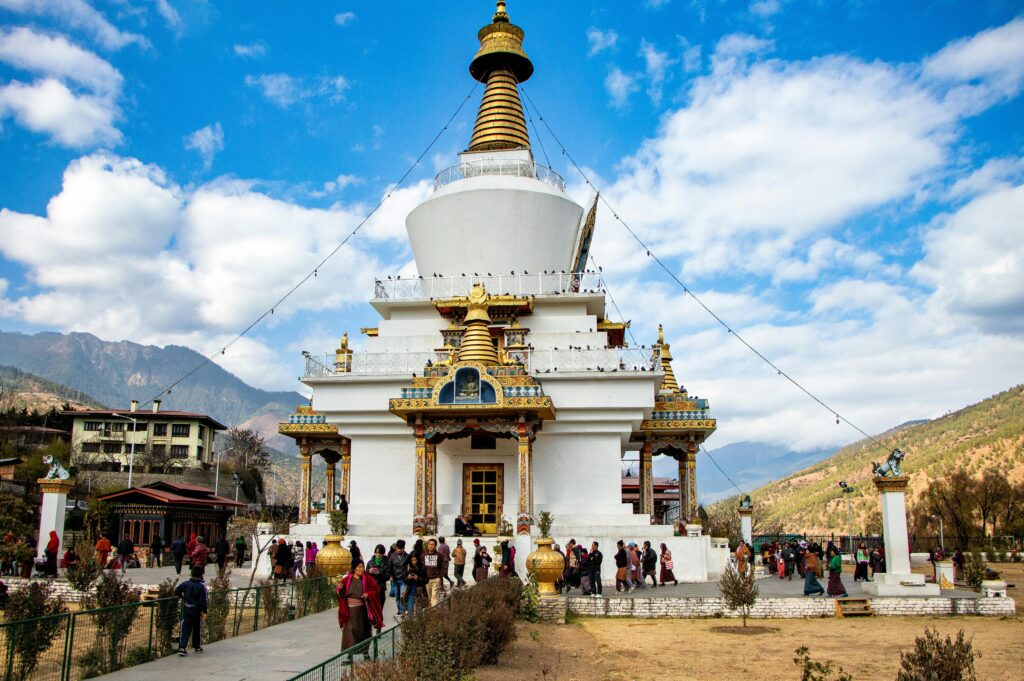
Leave a Reply
Your email is safe with us.